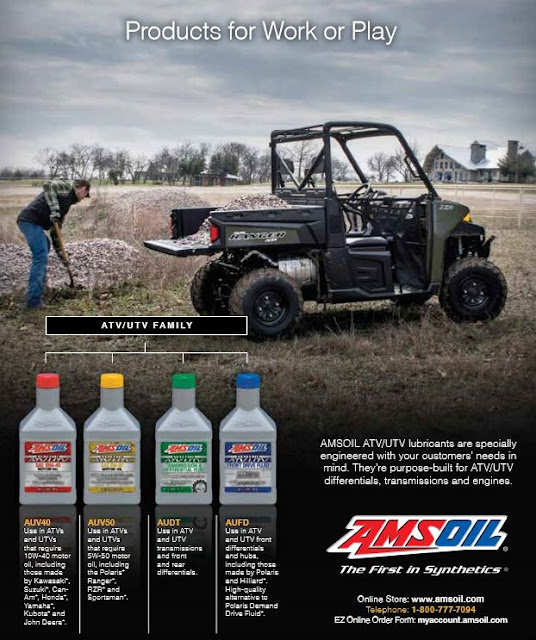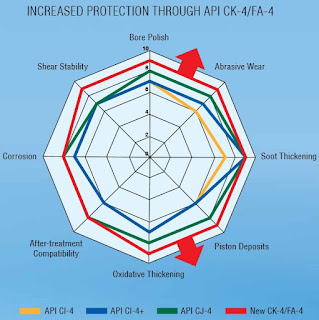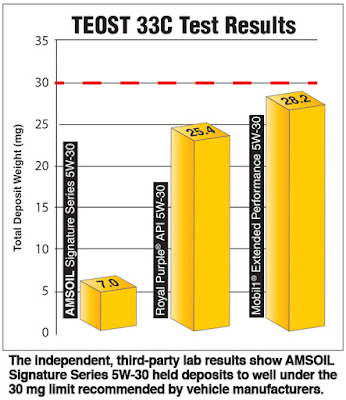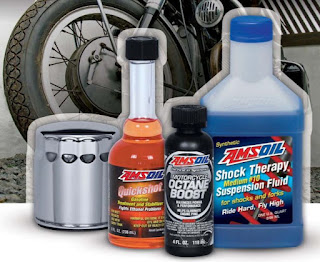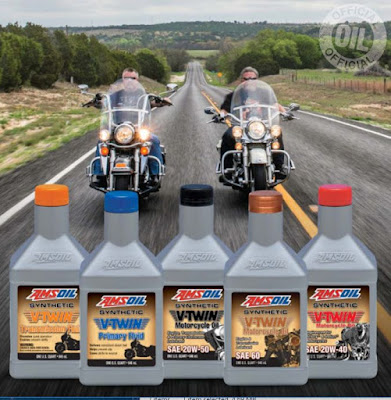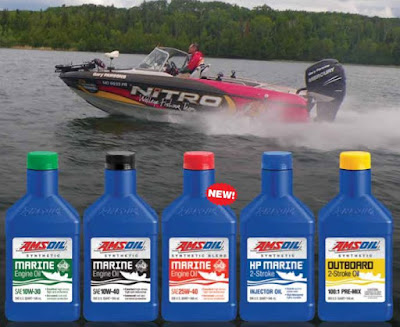This blog is dedicated to information to improve Performance and MPG (miles per gallon) as well as the latest news in the Automotive and Transportation industries.
Friday, January 06, 2017
Thursday, January 05, 2017
New Diesel API Specifications for 2017
Changes in the Diesel Market
Diesel engine technology must deliver reduced emissions and improved fuel economy without sacrificing power.
Federal regulations are dictating that medium- and heavy-duty diesel vehicles must reduce fuel consumption and greenhouse gas emissions 15 percent by model year 2018, driving major changes in the diesel world. The API CJ-4 specification that has represented the standard for diesel oil performance for the past decade will soon give way to new specifications that will evolve with diesel technology to help ensure manufacturers meet federal mandates.Two Specifications Replace CJ-4
Initially labeled Proposed Category 11 (PC-11) in its working stages, the new API specification has been split in two (API CK-4, FA-4) to accommodate the different requirements of older and newer engines. Both specs focus on drastically reducing emissions and improving fuel economy, while providing increased engine-protection benefits through improvements in oxidation stability, shear stability and resistance to aeration. Engine oils meeting the new specs will begin launching Dec. 1, 2016.
What are the Differences Between API CK-4 and API FA-4?
API CK-4
Designed for current model-year and older diesel engines, API CK-4 oils will offer greater protection and performance benefits over API CJ-4 oils. CK-4 oils will be backward-compatible with CJ-4 oils and will be recommended in all applications specifying CJ-4 (and prior) specifications. In addition to the traditional 15W-40 viscosity grade, CK-4 will offer lower-viscosity options to enhance fuel economy benefits, including 10W-30, 5W-40 and 5W-30.- Designed for current model-year and older diesel engines
- Backward-compatible with API CJ-4 (and prior) oils
- Offers traditional viscosity grades of 15W-40, 10W-30, 5W-40 and 5W-30
API FA-4
Introduced for 2017 and newer diesel engines designed to meet new emissions standards, API FA-4 is a new category of lower-viscosity oils. It was created to further improve fuel economy and reduce emissions, while delivering the same enhanced protection and performance benefits of CK-4.API FA-4 oils will be formulated to further improve fuel economy in two ways: lower viscosity and reduced high-temperature/high-shear viscosity (HTHS). While the diesel lubricant market has traditionally been dominated by 15W-40 oils, FA-4 will primarily feature 10W-30 oils. In addition, because lower HTHS numbers are linked with improved fuel economy, the minimum HTHS for FA-4 is lower (2.9) than the minimum HTHS for CK-4 (3.5).
- Designed for certain 2017 and newer diesel engines
- Not backward-compatible
- Designed to improve fuel economy and reduce emissions
- Primarily features 10W-30 viscosity grade
AMSOIL Prepared for Change
AMSOIL customers can be well-assured that we will be ready for the implementation of the new diesel specifications with top-performing synthetic formulations.New Test Requirements
In order to meet federal regulations, original equipment manufacturers (OEMs) are relying on engine designs that produce ever-increasing operating temperatures. The new API CK-4 and FA-4 specifications introduce new shear-stability requirements to minimize viscosity loss, as well as two new and updated tests to ensure additional protection benefits in the areas of oxidative stability and aeration resistance:
New Mack T13 Test
Measures oil oxidation under the higher temperatures common with modern engines.
New CAT Aeration Test
Replaces the Engine Oil Aeration Test (EOAT), which used hardware that isn’t available anymore
The rest of the tests carry over from API CJ-4.
AMSOIL Diesel oils
The rest of the tests carry over from API CJ-4.
AMSOIL Diesel oils
AMSOIL 5W-30 Signature Series Synthetic Motor Oil
Leading the Field in Deposit Protection
Testing proves AMSOIL Signature Series 5W-30 Synthetic Motor Oil provides more complete protection against damaging deposits than its competitors.
The push toward smaller, fuel-efficient yet powerful engines has driven the development of several key technologies. Gasoline direct injection (GDI) and turbochargers are now common features of passenger cars and light trucks. By 2020, industry experts predict that nearly every new vehicle will feature GDI technology, and the vast majority will be turbocharged. While these advanced technologies enhance performance, they also present serious challenges to motor oil.The Turbocharger Trade-Off
Turbochargers push more air into the engine’s combustion chamber, providing better fuel-economy and performance but also creating intense engine temperatures. They often operate above 150,000 rpm on exhaust gases exceeding 1000°F. These extreme conditions cause some motor oils to break down and solidify into harmful deposits.Vehicle manufacturers have long recommended different service intervals based on “normal” or “severe” driving conditions. Turbocharged vehicles are automatically included in the severe service category due to the extreme heat they generate. Motor oil with unique properties is required to combat the effects of intense temperatures.
Proof of Protection
AMSOIL Signature Series 5W-30 Synthetic Motor Oil was tested against two competing brands to determine its level of protection against deposit formation in high-heat applications.
The TEOST 33C test (ASTM D6335) is an industry-standard bench test that simulates turbocharger operating conditions. According to the American Society for Testing and Materials (ASTM), it is “designed to predict the high temperature deposit forming tendencies of an engine oil.” To meet the API SN Resource Conserving and ILSAC GF-5 motor oil specifications that are often recommended by vehicle manufacturers, a 5W-30 motor oil must limit total deposit formation to 30 mg or less.
AMSOIL Signature Series 5W-30 Synthetic Motor Oil held the total weight of deposits to 7 mg, well under the 30 mg limit required by the API and ILSAC, while Royal Purple® API 5W-30 and Mobil1® Extended Performance 5W-30 came in just under the limit at 25.4 mg and 28.2 mg respectively. Signature Series 5W-30 Synthetic Motor Oil protects against harmful deposits on turbochargers 4X better than Mobil1® Extended Performance and 3.6X better than Royal Purple® in industry-standard testing*.
*Based on independent, third-party testing of AMSOIL® Signature Series 5W-30, Mobil1® Extended Performance 5W-30 and Royal Purple® API 5W-30 in the ASTM D6335 bench test required by the API SN Resource Conserving specification.
Test results represent the formulations available as of April 2016. Formulations were coded to eliminate bias during testing and samples were tested in random order. An appropriate number of trials of each oil were run to produce results at or above the 95 percent confidence level when compared to AMSOIL Signature Series 5W-30 Synthetic Motor Oil.
AMSOIL Synthetic Motorcycle Products
More Than Just Motorcycle Products
AMSOIL Products are the finest available anywhere.Motorcycle Products
AMSOIL Synthetic DCT Fluid
AMSOIL Synthetic DCT Fluid
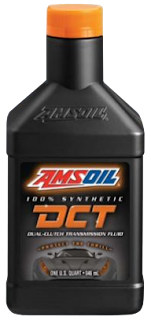 Protect the thrill
Protect the thrill
New AMSOIL 100% Synthetic DCT Fluid (DCT) is specifically engineered for sophisticated dual-clutch transmissions. Its superior frictional properties protect against shudder and gear clashing to consistently produce fast, smooth shifts. AMSOIL Synthetic DCT Fluid’s exceptional durability provides stability in stop-and-go traffic and excels under intense, high-heat conditions. Its built-in oxidation resistance helps prevent sludge formation in vital transmission parts.
AMSOIL Coolant Boost
Reformulated AMSOIL DOMINATOR® Coolant Boost
DOMINATOR Coolant Boost has been reformulated with the latest organic-acid technology. Organic acids are more robust and longer-lasting than inorganic acids, offering excellent resistance to scaling, dropout and corrosion. They also contribute to improved compatibility; the new DOMINATOR Coolant Boost formulation can be mixed with soft, tap and distilled water, in addition to any brand of antifreeze.
RACERS
• Up to 25ºF reduced engine temps help protect the engine and maximize horsepower, helping racers confidently push their vehicles to the limit.
• Excellent corrosion resistance helps protect expensive engines and cooling-system components
MOTORISTS
• Up to 54 percent faster warm-up times mean a more comfortable vehicle on cold days.
For more information:
Tuesday, March 10, 2015
Synthetic Motor Oil for Victory® and Indian® Motorcycles
 |
| Click for larger image |
V-Twins Synthetic Oil For V-Twin Transmissions or Chaincases
 |
| Click for larger image |
Tuesday, March 03, 2015
The Value of Consistent Clutch Feel
It’s well-known that racing is one of the ways AMSOIL motor oils are tested, proven and fine-tuned to become the exceptional products we stand behind. We don’t invest in racers simply to put the AMSOIL brand in front of fans; AMSOIL racers become technical partners.
The development of new AMSOIL Synthetic Dirt Bike Oil, introduced last month, offers a perfect example. AMSOIL-sponsored supercross and motocross racers identified consistent clutch feel as a key performance attribute on the track. At the time, there was no dirtbike-specific oil on the market that provided the level of clutch consistency professional and amateur riders need. Consistent clutch feel is critical to riders during race starts to keep the bike from lurching forward prior to the gate dropping. Trail riders, meanwhile, need consistent clutch feel to confidently navigate obstacles without having to shift gears and lose momentum.
Armed with that information, AMSOIL engineers went to work. Clutch feel is inherently subjective, which creates challenges in designing a lubricant that delivers this benefit. To overcome that challenge, AMSOIL designed an extreme simulated-start test for dirt bikes. The test allows AMSOIL engineers to apply accelerated stress to a dirt bike’s clutch in order to monitor clutch feel produced by a candidate lubricant.
AMSOIL Synthetic Dirt Bike Oil was also subjected to extensive ontrack testing in the bikes of GEICO/AMSOIL/Honda Factory Connection and other professional riders. This combination of rider feedback and lab testing resulted in the final formulation of AMSOIL Synthetic Dirt Bike Oil.
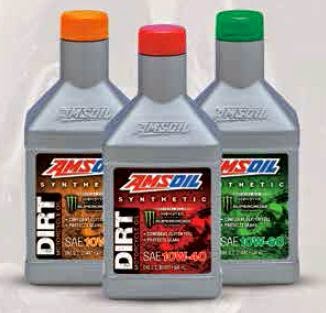 |
| AMSOIL Synthetic Dirtbike Oil |
The development of new AMSOIL Synthetic Dirt Bike Oil, introduced last month, offers a perfect example. AMSOIL-sponsored supercross and motocross racers identified consistent clutch feel as a key performance attribute on the track. At the time, there was no dirtbike-specific oil on the market that provided the level of clutch consistency professional and amateur riders need. Consistent clutch feel is critical to riders during race starts to keep the bike from lurching forward prior to the gate dropping. Trail riders, meanwhile, need consistent clutch feel to confidently navigate obstacles without having to shift gears and lose momentum.
Armed with that information, AMSOIL engineers went to work. Clutch feel is inherently subjective, which creates challenges in designing a lubricant that delivers this benefit. To overcome that challenge, AMSOIL designed an extreme simulated-start test for dirt bikes. The test allows AMSOIL engineers to apply accelerated stress to a dirt bike’s clutch in order to monitor clutch feel produced by a candidate lubricant.
AMSOIL Synthetic Dirt Bike Oil was also subjected to extensive ontrack testing in the bikes of GEICO/AMSOIL/Honda Factory Connection and other professional riders. This combination of rider feedback and lab testing resulted in the final formulation of AMSOIL Synthetic Dirt Bike Oil.
Premium Protection For High-Horsepower Chrysler & Nissan Applications
New synthetic 0W-40 motor oil rounds out the Signature Series line.
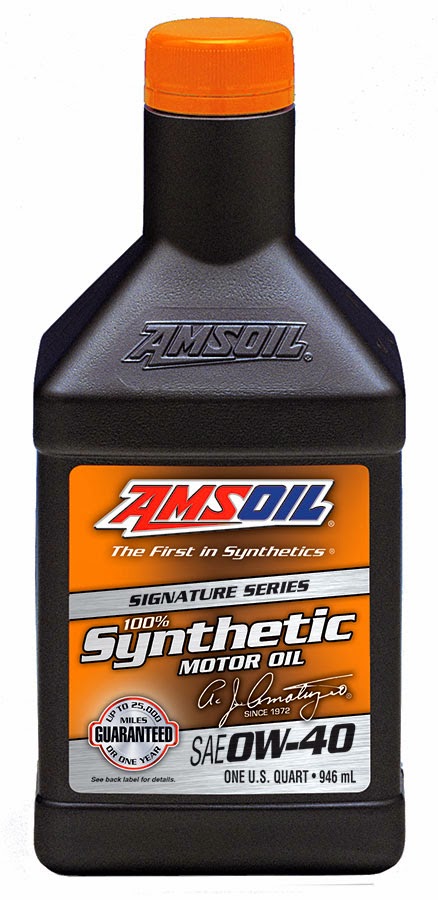 |
| AMSOIL Synthetic 0W-40 |
650 lb-ft of torque.
Powerful muscle car and big truck engines need a high-performance lubricant, and much like these powerful vehicles, AMSOIL sets the bar high when it comes to performance. AMSOIL established all-new standards for motor oil quality and performance when it introduced the world’s first synthetic motor oil to meet American Petroleum Institute (API) service requirements in 1972, and it continues to produce the top-performing lubricants available on the market.
New Signature Series 0W-40 Synthetic Motor Oil
Along with the new 5W-50 viscosity formulated for high-horsepower Ford Mustang engines, the Signature Series line now includes a robust 0W-40 synthetic motor oil formulated specifically for high-horsepower Chrysler and Nissan engines. AMSOIL Signature Series 0W-40 Synthetic Motor Oil (AZF) provides top-of-the-mark protection and performance that customers expect from Signature Series.· Withstands the stress of high horsepower and heat to provide outstanding wear protection
· Resists viscosity loss due to mechanical shear
· Resists thermal breakdown
· Helps prevent sludge deposits and keeps engines clean
· Reduces oil consumption and emissions
· Maximizes fuel economy
Applications
Signature Series 0W-40 is recommended for Chrysler and Nissan applications calling for a 0W-40 viscosity and requiring the following performance specifications:· API SN, SM...
· Chrysler MS-12633, MS-10725, MS-10850
· Nissan GT-R®
Applications include, but are not limited to, the following:
· Dodge Charger 6.1L/6.4L
· Dodge Challenger 6.1L/6.4L
· Dodge Viper 8.3L/8.4L
· Dodge Ram 2500/3500/4400/5500 6.4 L
· Chrysler 300 6.1L/6.4L
· Jeep SRT Grand Cherokee 6.1L/6.4L
· Nissan GT-R 3.8L
More information on AMSOIL Synthetic 0W-40 Motor Oil
Thursday, February 26, 2015
Lubrication Technology Explained
LUBRICATION 101: A LOOK AT BASIC LUBRICATION CONCEPTS
Lubrication can be a daunting subject for someone unfamiliar with its basic concepts. Even someone with experience in the field can be confused by the multitude of lubricants available on the market today. Reviewing a few basic lubrication principles can make it easier to understand why proper lubrication is necessary in every application.FRICTION
Webster defines friction as the “rubbing of one body against another,” and as “resistance to relative motion between two bodies in contact.” Friction can be beneficial. It generates heat that can be used to start a fire, and it is the principle behind a vehicle’s braking system.Friction can also be detrimental. The heat generated as the result of friction can cause damage to an engine. Because contact is required to generate friction, wear can take place in these areas of contact, leading to material failures, overheating and the formation of deposits. Although there are many ways to reduce friction, the most common way is through the use of a fluid or semifluid lubricant. The key characteristic of lubricants is that they are not readily compressible, minimizing component contact or eliminating contact altogether.
TYPES OF LUBRICATION
There are three types of lubrication conditions that can exist between two surfaces:Hydrodynamic or Full-Film Lubrication is the condition in which surfaces are completely separated by a continuous film of lubricating fluid. The non-compressible nature of this film separates the surfaces and prevents metal-to-metal contact. The lubricant’s viscosity assumes responsibility for the majority of wear protection; additives play a limited role. Although full-film lubrication does not generally allow metal-to-metal contact, abrasive wear or scratching can still occur if dirt particles penetrate the lubricating film.
HYDRODYNAMIC LUBRICATION
SURFACES SEPARATED BY BULK LUBRICANT FILM
Engine components operating under a full-film lubrication regime include the crankshaft, camshaft and connecting rod bearings, and piston pin bushings. Under normal loads, transmission and rear-axle bearings also operate under a full-film regime.
Elasto-Hydrodynamic Lubrication exists when a sudden reduction of the oil film causes a temporary increase in viscosity. When viscosity increases, the film can become rigid, creating a temporary elastic deformation of the surfaces. The lubricant’s viscosity and additives work together to protect surfaces in an elasto-hydrodynamic regime.
The shear strength of the fluid increases due to an increase in load or pressure of a surface and behaves as though it were stronger than the metal surface it acts against, thus causing the surface to deform.
Anti-wear additives are often relied upon to protect engine bearings in high-load conditions, while both anti-wear and extreme-pressure additives work to protect gears in high-load conditions.
BOUNDARY LUBRICATION
PERFORMANCE ESSENTIALLY DEPENDENT ON BOUNDARY FILM
Boundary Lubrication is a condition in which the lubricant film becomes too thin to provide total surface separation. This may be due to excessive loading, low speeds or a change in the fluid’s characteristics. In such cases, occasional metal-to-metal contact takes place between surfaces, and the surfaces are almost entirely dependent on the lubricant’s additives to provide protection.
Anti-wear additives protect the cam lobes, cylinder walls and piston rings in engine high-load conditions, while antiwear and extreme-pressure additives protect ring and pinion gears in rear axles.
OTHER LUBRICANT FUNCTIONS
Though minimizing friction and wear is the primary function of a lubricant, it is also required to perform the following tasks:
Clean - A lubricant must maintain internal cleanliness by suspending contaminants or keeping contaminants from adhering to components.
Cool Moving Elements - Reducing friction minimizes the amount of heat generated and lowers the operating temperature of the components. A lubricant must also absorb heat from the components and transport it to a location where it can be safely dissipated.
Prevent Contamination - The lubricant must act as a dynamic seal in locations such as the piston, piston ring and cylinder contact areas. This minimizes contamination by combustion byproducts, for example, in the lubricating system. Lubricants are also relied upon to support mechanical seals found elsewhere and to minimize external contamination and fluid loss.
Dampen Shock - The lubricant may be required to cushion the blows of mechanical shock. A lubricant film can absorb and disperse these energy spikes over a broader contact area.
Transfer Energy - A lubricant may be required to act as an energy transfer medium as in the case of hydraulic equipment or lifters in an automotive engine.
Prevent Corrosion - A lubricant must have the ability to prevent or minimize internal component corrosion. This can be accomplished either by chemically neutralizing the corrosive products or by setting up a barrier between the components and the corrosive material.
COMPONENTS OF A LUBRICANT
Lubricants are generally composed of two groups of materials. Base oils comprise 75 to 95 percent of the finished product. The most commonly used base oils are derived from petroleum crude oil. Additives are usually added to the base oils to enhance or impart new properties. The use of such special chemical compounds is another way to minimize friction and wear, and they can offer protection when the lubricating fluid cannot maintain component separation.
INCREASED DEMAND ON LUBRICANTS
As time goes on, the lubrication needs of equipment continue to change. As equipment becomes more advanced and sophisticated, the demands placed upon the required lubricants become more severe. What may have been a preferred lubricant in the past is likely to be totally unacceptable today.
The automotive industry is an excellent example of how demands on equipment have changed. The engines used in today’s vehicles require significantly more from a motor oil than they did in the past.
Modern vehicles are requiring lighter viscosity oils for improved fuel economy, but feature engines that output more power per cubic inch of displacement than ever before. To achieve this power level, vehicle manufacturers are adding turbochargers that expose motor oils to higher temperatures and greater stress. Meanwhile, requirements for cleaner exhaust emissions have contributed to higher levels of contaminants in the oil and increased the oil’s operating temperature. By reducing aerodynamic drag, manufacturers have also minimized the amount of air that flows over engines and drivetrains, causing operating temperatures to trend further upward. Even with all these changes, manufacturers are requiring lubricants to last longer than they ever did before.
HOW ARE SYNTHETIC OILS DIFFERENT?
Although the engineering of synthetic base oils varies, synthetics are generally made through a reaction process that significantly improves the consistency of the base oil and its molecular uniformity. Conventional petroleum base oils, on the other hand, are obtained through a process of distillation.
Distillation slightly limits the molecular diversity that may exist within the base oil, but does not completely eliminate nonessential molecular structures. This is important because unnecessary molecular structures produce variations in the base oil’s performance. The ideal lubricant’s chemical composition is one in which the molecular construction is identical throughout, such as in a synthetic base oil. Because of the way synthetic base oils are produced, they are molecularly uniform and contain significantly less undesirable materials than a conventional base oil.
Molecular uniformity also affects the properties that each type of lubricant possesses. The properties of conventional oils tend to vary due to inconsistencies in the crude oil from which they are obtained. The properties and performance features of synthetics, on the other hand, are predictable due to their molecular uniformity.
AMSOIL synthetic lubricants are formulated to take advantage of the superior properties of premium synthetic base oils and top-of-the-line additives. They provide excellent lubrication and wear protection and have been designed to resist the chemical breakdown processes that limit the service life of conventional petroleum oils.
Cold-Temperature Performance is not Just Reserved for Sub-Zero Conditions
 Startup lubrication is directly affected by a lubricant's cold-flow
ability, and the impact is felt at higher temperatures than most
consumers realize. An oil’s cold-temperature performance refers to its ability to flow when the engine is cold, or below typical operating temperature (212°F), and not simply to what feels cold to humans – even some summer days can be cold to an engine.
Startup lubrication is directly affected by a lubricant's cold-flow
ability, and the impact is felt at higher temperatures than most
consumers realize. An oil’s cold-temperature performance refers to its ability to flow when the engine is cold, or below typical operating temperature (212°F), and not simply to what feels cold to humans – even some summer days can be cold to an engine.Pour point has been defined as the lowest temperature at which a motor oil will continue to flow under prescribed conditions. ASTM D97 spells out the standardized procedure for determining an oil’s pour point. After heating it to 45°C (113°F) the sample is slowly cooled and tilted sideways every time the temperature drops 3°C (5°F). When the oil stops flowing it has reached the pour point.
AMSOIL synthetic motor oils have lower pour points and better cold-cranking capabilities than petroleum-based products. Long after petroleum oils have solidified, AMSOIL synthetic motor oils continue to flow.
The problems with cold weather go beyond this, however. Motor oils really need to be heated well above the pour point to achieve the desired pumping viscosity. Even at just below freezing (32°F), motor oil can become difficult to pump into the engine. It sits in the pan while the friction from moving parts heats the engine and conducts this heat down into the pan. As you can imagine, this lack of oil in an engine with fast moving parts has consequences. Cold-weather start-ups are a leading cause of engine wear.
AMSOIL Synthetic Motor Oils
Friday, January 09, 2015
AMSOIL Adds 700-Hour Limit to Signature Series Drain Interval
Because
a motor oil’s service life can be greatly affected by vehicle operating
conditions, AMSOIL provides definitions for normal and severe service and
recommends corresponding drain intervals for each. One of the conditions used
to identify severe service is “excessive idling.” Because this term is somewhat
ambiguous, AMSOIL is adding a 700-hour limitation to its Signature Series
Synthetic Motor Oil drain interval for vehicles subjected to excessive idling.
In normal service, Signature Series is recommended for up to 25,000 miles, 700
hours of operation or one year, whichever comes first. In severe service,
Signature Series is recommended for up to 15,000 miles, 700 hours of service or
one year, whichever comes first.
More information:
AMSOIL Signature Series Synthetic Motor Oils
More information:
AMSOIL Signature Series Synthetic Motor Oils
Labels:
0w-20,
0w-30,
10w-30,
5w-20,
5w-30,
amsoil,
amsoil synthetic,
api sn,
best motor oil,
best motoroil,
best synthetic,
best synthetic oil,
dexos,
dexos 1,
dexos1,
drain interval,
ilsac gf-5,
oil drain
New AMSOIL Synthetic Dirt Bike Oil Expands Market
 |
| AMSOIL Synthetic Dirt Bike Oils |
For more information:
AMSOIL Synthetic Motorcycle Oils
Premium Protection for High-Horsepower Ford Mustangs
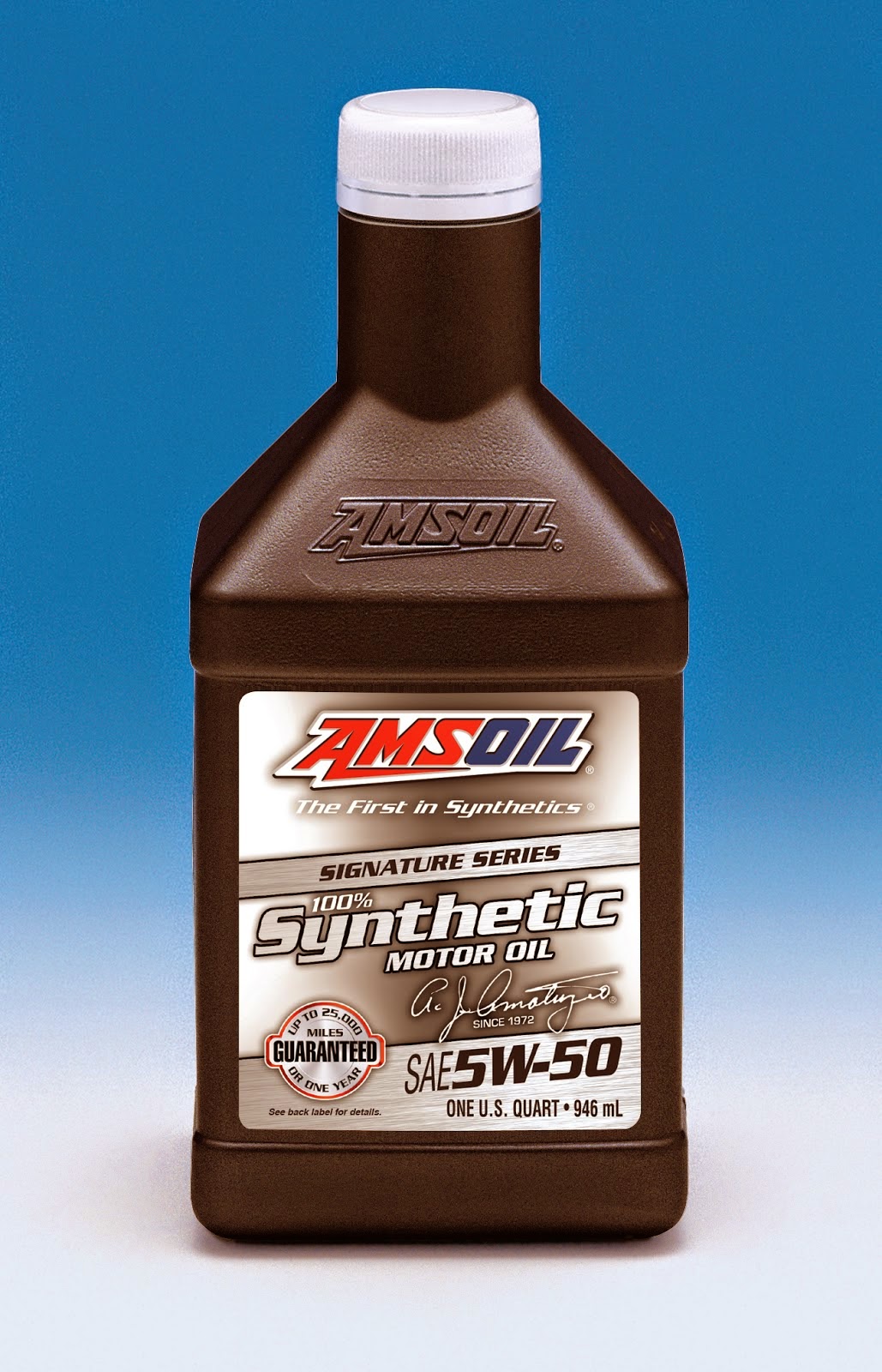 |
| 5W-50 Synthetic Motor Oil |
AMSOIL has expanded the Signature Series line to include a robust 5W-50 synthetic motor oil formulated specifically for high-horsepower Ford Mustang engines. Signature Series 5W-50 Synthetic Motor Oil (AMR) provides top-of-the-mark protection and performance that customers expect from Signature Series, and it is excellent for all Mustang engines calling for a 5W-50 viscosity.
For more information:
AMSOIL Signature Series 5W-50 Synthetic Motor Oil for High-Horsepower Ford Mustangs
Saturday, June 07, 2014
AMSOIL Now Offers Free Shipping to Online/Catalog Customers
Effective May 1, 2014, online/catalog customers in the continental U.S. will receive free shipping on orders of $100 or more. Customers who order less than $100 will be charged a flat shipping fee of $8.50.
Preferred Customers do not receive free shipping, but continue to save much more in discounts making the Preferred Customer option the best option in total savings in purchases of AMSOIL products.
To purchase products at the Preferred Customer price you need only visit the AMSOIL Online Store. Once you add the Preferred Customer option to cart, prices immediately drop to reflect Preferred Customer pricing. If you are already a Preferred Customer just login with your Preferred Customer number.
Preferred Customers do not receive free shipping, but continue to save much more in discounts making the Preferred Customer option the best option in total savings in purchases of AMSOIL products.
To purchase products at the Preferred Customer price you need only visit the AMSOIL Online Store. Once you add the Preferred Customer option to cart, prices immediately drop to reflect Preferred Customer pricing. If you are already a Preferred Customer just login with your Preferred Customer number.
Tuesday, May 13, 2014
AMSOIL Synthetic CVT Fluid
 |
| AMSOIL Synthetic CVT Fluid |
Package sizes include:
- Quart Bottle
- 2.5-Gallon Bottle
- 55-Gallon Drum
Excellent Frictional Properties
The metal-to-metal frictional properties between the CVT's belt/chain interface and the pulleys are important, relying on the CVT fluid to prevent slipping. AMSOIL Synthetic CVT Fluid provides exceptional metal-to-metal frictional properties to help prevent belt and chain slipping and help extend transmission life.Outstanding Wear Protection
AMSOIL Synthetic CVT Fluid is durable. In normal and severe service, it effectively resists wear to the transmission's vital parts, helping achieve long life.Resists Heat
In elevated heat, Synthetic CVT Fluid's thermally stable formulation guards against the harmful effects of thermal breakdown. It resists the formation of varnish that can threaten transmission performance and life.Superior Wet-Clutch Performance
AMSOIL Synthetic CVT Fluid provides superior wet-clutch performance for outstanding anti-shudder durability and reduced noise, vibration and harshness.Field Proven
Field testing was conducted to compare AMSOIL Synthetic CVT Fluid and Nissan NS-2 CVT Fluid. Four vehicles (two equipped with AMSOIL CVT Fluid and two with Nissan NS-2 CVT Fluid) were driven 100,000 miles before the transmissions were torn down and inspected.Lab Tested
AMSOIL lab testing also reveals AMSOIL CVT Fluid met, and in some cases surpassed, the protection and performance
of Nissan NS-2 CVT Fluid:
- In FZG wear testing (ASTM D5182), Nissan NS-2 achieved a 7 stage pass, while AMSOIL CVT Fluid significantly surpassed it with an 11 stage pass.
- In the JASO LVFA Anti-Shudder Durability Test, AMSOIL CVT Fluid lasted six times longer, translating into improved anti-shudder durability and reduced noise, vibration and harshness.
APPLICATIONS
AMSOIL Synthetic CVT Fluid is recommended for belt- and chain-type continuously variable transmissions requiring
the following:
- Audi/Volkswagen TL 52180, G 052 180
- Dodge/Jeep CVTF+4®, NS-2
- Ford CVT23, CVT30, MERCON® C
- GM/Saturn DEX-CVT
- Honda HMMF, HCF-2
- Hyundai Genuine CVTF, SP-III
- Kia SP-III
- Mercedes-Benz 236.20
- Mini Cooper EZL 799
- Mitsubishi CVTF-J1, SP-III
- Nissan NS-2
- Subaru Lineartronic® CVTF (P/N K0425Y0710), NS-2
- Suzuki TC, CVT Green 1, NS-2
- Toyota TC
Not for use in eCVTs
For more information or to purchase AMSOIL Synthetic CVT Fluid.
Subscribe to:
Comments (Atom)
